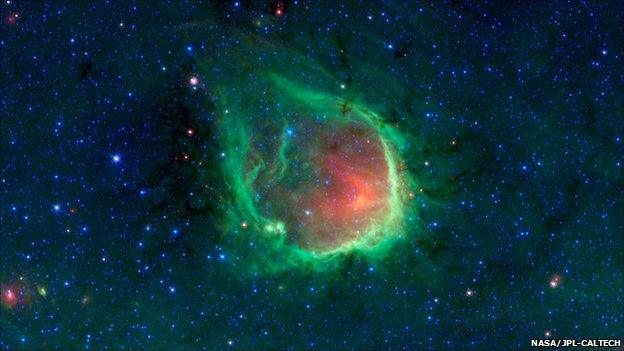Spitzer snaps stunning image of 'ring' nebula
- Published

RCW 120 is one of many such rings in the Milky Way, which remain to be catalogued with the public's help
The Spitzer space telescope has snapped a striking false-colour image of the RCW 120 nebula, a vast cloud of gas and dust where stars have recently formed.
RCW 120 lies about 4,300 light-years away in the constellation Scorpius, just above the plane of the galaxy.
It emits a broad range of colours in the infrared region, with wavelengths far beyond those we can see.
The ring-shaped emission is believed to originate from the heat of giant "O" type stars at the ring's centre.
These are among the most massive, hottest and bright stars we know of. Infrared light is emitted from the surrounding gas and dust as these stars impart their enormous heat.
Two different Spitzer instruments have contributed to the image, in which the colours represent increasing wavelengths: blue is 3,600 nanometres, green is 8,000 nanometres, and red is 24,000 nanometres (visible light that we see stops at about 800 nanometres).
RCW 120 is a particularly striking example of the many rings around O stars that Spitzer spots in the course of its observations.
However, the Spitzer team needs help in identifying and classifying what the space telescope can see.
As part of the "Zooniverse" series of citizen science projects, the public can visit the Milky Way Project, external to help spot more rings like RCW 120.
- Published11 May 2011
- Published8 December 2010